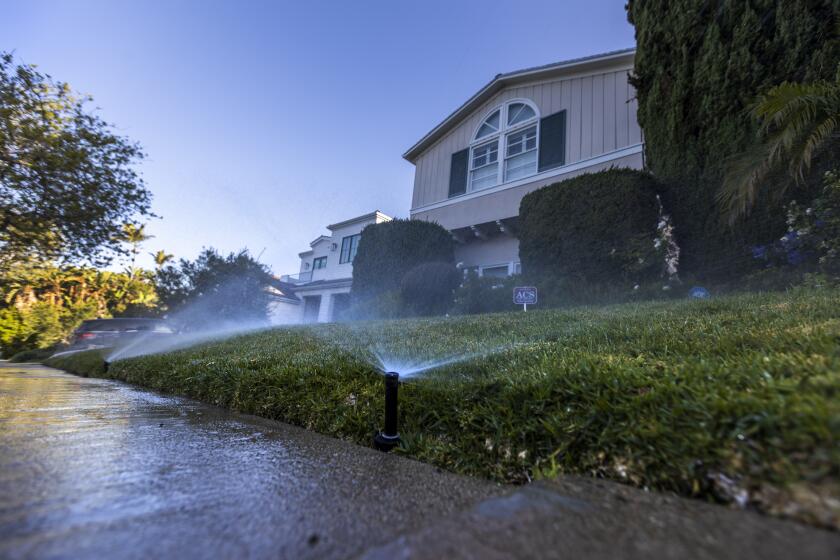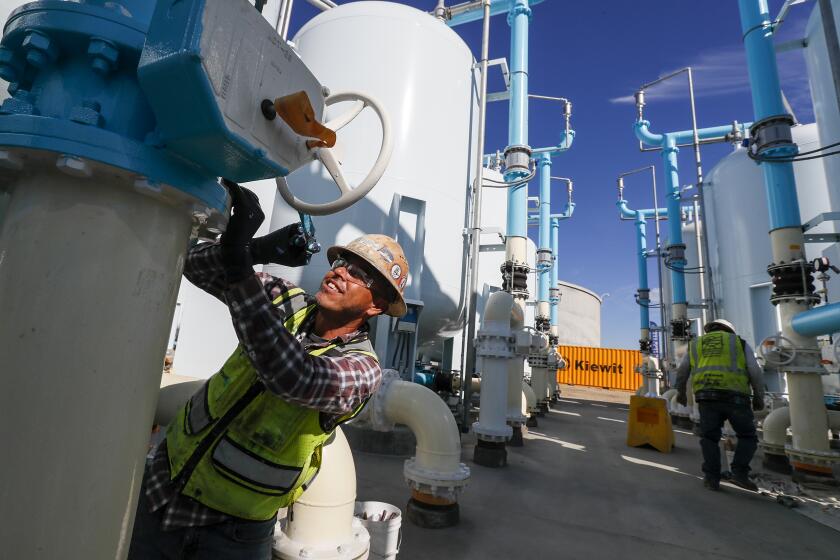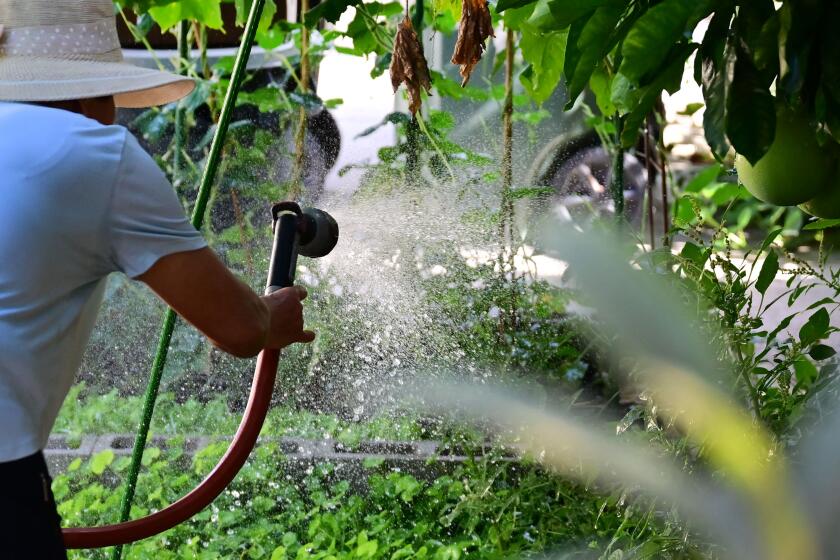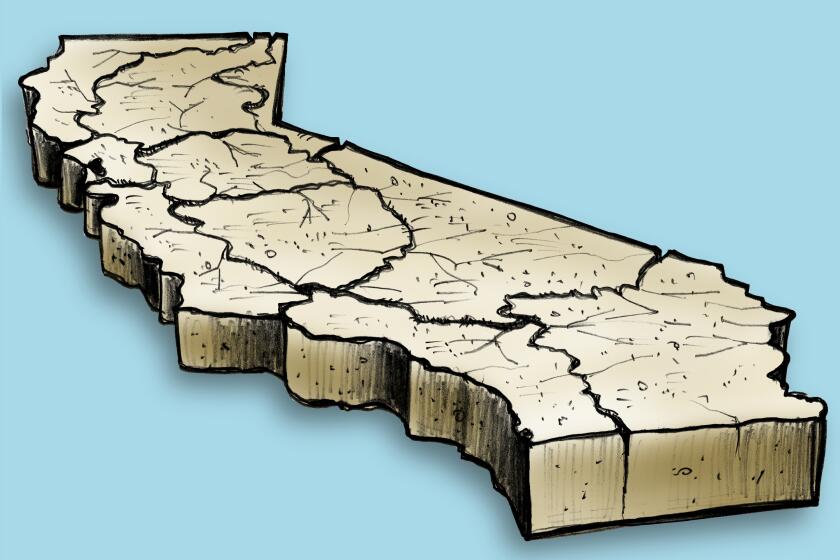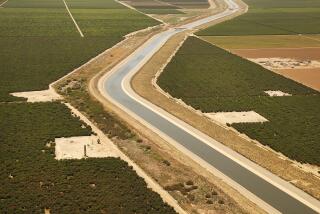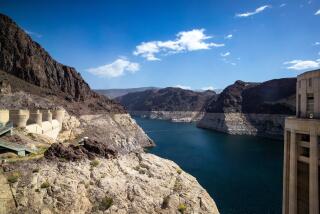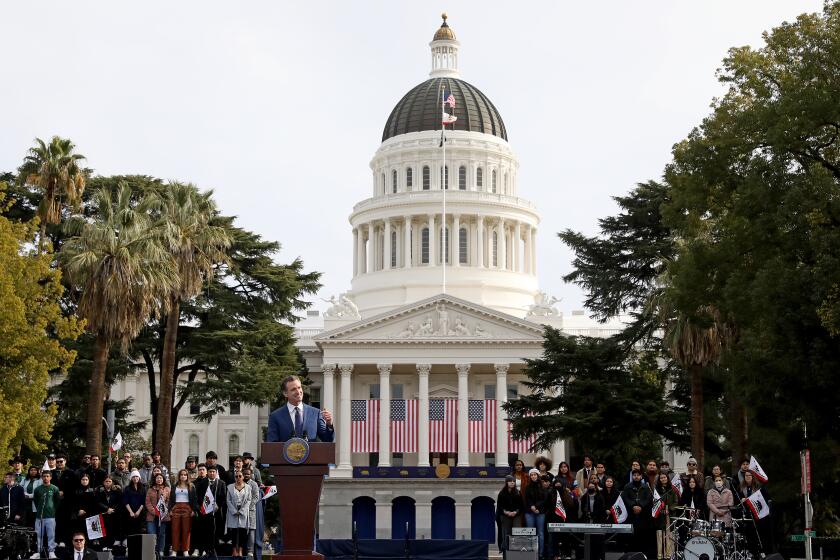Here’s how Southern California’s drought emergency could affect you

- Share via
The Metropolitan Water District of Southern California has declared a regional drought emergency and called on water agencies to immediately reduce their use of all imported supplies.
The reason? Drought conditions are limiting imported water supplies from the State Water Project in Northern California and the Colorado River.
State Water Project-dependent areas have been under mandatory restrictions for months, including limiting outdoor watering to once or twice a week and new pushes for drought-tolerant landscaping.
But areas reliant on the Colorado River had been spared — until now. The call for conservation in those areas is voluntary, but officials warned it could become mandatory if drought conditions persist in the coming months.
From June through September, Los Angeles Department of Water and Power customers used 6 billion gallons of water less than during the same period last year.
What does this mean for water supplies in my community?
Experts say there’s a good chance drought conditions will continue. By April, the MWD will consider allocating supplies to all of its 26 member agencies, requiring them to either cut their use of imported water or face steep fees. The agencies together serve about 19 million people.
MWD member agencies, which include the Los Angeles Department of Water and Power, the Municipal Water District of Orange County and the Inland Empire Utilities Agency, will implement voluntary and mandatory conservation measures at the local level based on particular circumstances, officials said. Those with local supplies or alternative options may be able to rely on them in the interim.
The city is nearing the completion of a $600-million project that will revitalize a long-contaminated water source and Superfund site.
The DWP, which imports state and federal water as well as water from the Owens Valley via the Los Angeles Aqueduct, has been under Level 3 of its water shortage contingency plan since June, including two-day-a-week outdoor watering limitations.
The mandatory measures in State Water Project-dependent areas will continue through at least June and possibly longer, the MWD said.
What areas would be covered?
The water restrictions earlier this year covered about 7 million residents. The new one will cover the entire service area, about 19 million people.
Why now?
About half of the MWD’s imported water comes from the State Water Project and half from the Colorado River — both of which have become “extraordinarily stressed by prolonged drought exacerbated by climate change,” the agency said.
The Colorado River has fallen to such historic lows that Lake Mead and Lake Powell — the nation’s two largest reservoirs — could reach “dead pool,” or the point at which water no longer passes downstream from a dam. California and six other states that rely on the river have been under pressure from the federal government to drastically reduce their use.
In October, some California water agencies, including the MWD, pledged usage reductions of up to 400,000 acre-feet per year, or about 9% of the state’s total 4.4 million water allotment from the river, through 2026. Still, other states are demanding that California do more to cut usage.
The drought emergency declaration came as representatives of the MWD and other water districts gathered in Las Vegas with officials from all seven states, the federal government and tribes for the annual conference of the Colorado River Water Users Assn. Attendees are discussing various issues about how the river is managed, including measures to address the severe shortage.
The Metropolitan Water District of Southern California is calling on water agencies in the region to immediately reduce their use of all imported supplies.
Have water restrictions worked?
Yes. In November, officials said Los Angeles residents reduced their water use by a staggering 6 billion gallons during the hottest months of the summer,.
The consumption is the overall lowest among the city’s nearly 4 million residents during those summer months since record keeping at the agency began in the early 1970s.
L.A. customers reduced their water use by 9% in June, 11% in July, 10% in August and 9% in September, amounting to record low usage during those months.
In L.A., officials imposed a series of rules that might now spread to other areas (each agency sets it own restrictions). L.A.’s included:
- Residents are assigned two watering days a week based on their addresses — Monday and Friday for odd addresses and Thursday and Sunday for even ones.
- Watering will be capped at only eight minutes, or 15 minutes for sprinklers with water-conserving nozzles.
- Exceptions for drip irrigation and hand watering will remain in place.
- No watering will be allowed between 9 a.m. and 4 p.m., regardless of the watering days.
- Those who don’t comply with the new rules will receive a warning, followed by escalating fines for each subsequent violation.
How do I know what my rules are?
Check with your local water provider to see the rules in your area.
No matter where you live, you can help conserve water by reducing your outdoor irrigation, replacing grass with drought-tolerant landscaping and upgrading to higher efficiency appliances. Many water agencies offer rebates to help with these and other actions.
The latest maps and charts on the California drought, including water usage, conservation and reservoir levels.
More to Read
Sign up for Essential California
The most important California stories and recommendations in your inbox every morning.
You may occasionally receive promotional content from the Los Angeles Times.
